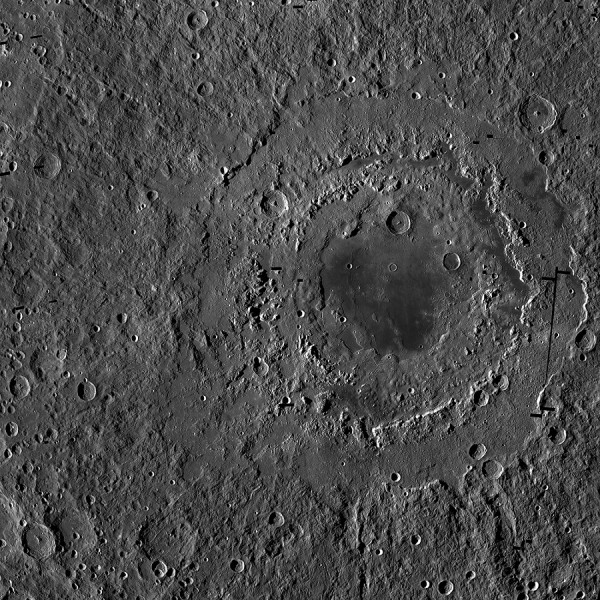By Ana Verayo, | October 28, 2016

Orientale basin is about 580 miles (930 kilometers) wide and has three distinct rings, which form a bullseye-like pattern. This view is a mosaic of images from NASA's Lunar Reconnaissance Orbiter.
Astronomers have figured out how the moon's mysterious "bullseye" was created in a new study, which detailed how these three concentric rings were made from impact craters on the lunar surface also known as the Mare Orientale.
Like Us on Facebook
NASA scientists along with researchers from Brown University obtained data from NASA's GRAIL (Gravity Recovery and Interior Laboratory) spacecraft and created a first-of-its-kind model that shows how this impact basin came to be some 3.8 billion years ago.
According to the lead author of the study, geologist Brandon Johnson from Brown University, these massive impacts (similar to the one that formed the Mare Orientale) are considered to be one of the most crucial driving forces that shaped the crusts of protoplanets in the infant solar system.
Researchers say with the help of new GRAIL data, scientists now have a better understanding of how impact crater basins were formed and then apply this knowledge to basins on other planets and moons.
According to the co-author of the study, geologist Jim Head who is also from Brown, GRAIL data is similar to an X-ray machine, scanning in great detail which surface layer corresponds to its subsurface.
Massive asteroid impacts and collisions can cause the surface to rebound due to initial shock, erasing the first crater made as revealed by the Orientale. Now, GRAIL scientists are searching for the first crater, the initial impact beneath the surface, allowing them to estimate how much lunar rock was carved out by the initial impact.
Researchers say that the rebounding crust was scorching hot and very malleable, flowing inwards into the core of impact. As the rock flowed inwards, it created massive cracks and cliffs forming the two outer rings. On the other hand, the inner ring was formed with molten rebounding material flowing outwards in a circular shape.
Johnson explains how the moment of this initial impact lasted only a few minutes, as seven-kilometer cliffs began climbing from the central ring.
These new findings can also help scientists to study ring formations on other planets like Mars, where several impact basins lie.
-
Use of Coronavirus Pandemic Drones Raises Privacy Concerns: Drones Spread Fear, Local Officials Say

-
Coronavirus Hampers The Delivery Of Lockheed Martin F-35 Stealth Fighters For 2020

-
Instagram Speeds Up Plans to Add Account Memorialization Feature Due to COVID-19 Deaths

-
NASA: Perseverance Plans to Bring 'Mars Rock' to Earth in 2031

-
600 Dead And 3,000 In The Hospital as Iranians Believed Drinking High-Concentrations of Alcohol Can Cure The Coronavirus

-
600 Dead And 3,000 In The Hospital as Iranians Believed Drinking High-Concentrations of Alcohol Can Cure The Coronavirus

-
COVID-19: Doctors, Nurses Use Virtual Reality to Learn New Skills in Treating Coronavirus Patients







